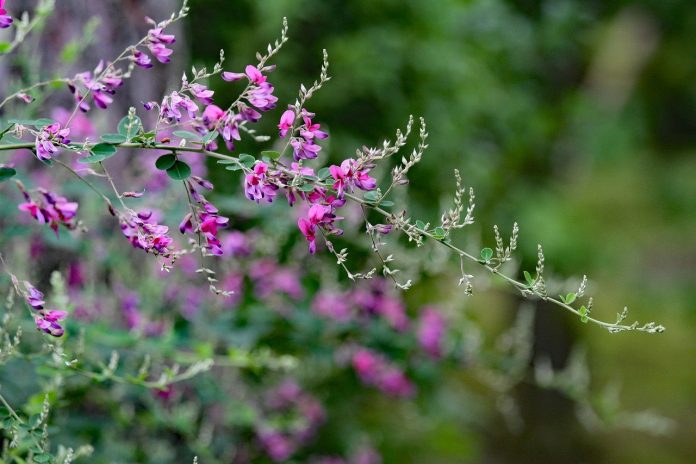One of the best parts of being an extension educator is that no two days are alike. Even if you get a few calls about the same problem, the situation is always different once you drive out to the location.
There are times that I don’t have to drive anywhere, thanks to the wonderful technology we have that enables my clients to send me pictures for identification purposes. These are always the most interesting calls because it is like solving a puzzle. Sometimes I know the answer immediately, and other times, I must consult one of my weed guides.
No matter the problematic weed that comes across my desk, I always learn something new. Therefore, I get to pass it along to you!
My dad always makes sure I have something to do at work because he is always sending me pictures of the weeds he comes across while driving around the farm. The other day he sent me a picture of what he thought was Chinese Bush Clover.
Apps
He was up in the hayfield and cut a piece and sent me a picture after using an app on his phone that I had recommended. There are quite a few apps that work nicely for answering those identification questions you may have in a pinch. After opening the app, you can hold your phone up to any plant or insect and it will identify them for you.
Sometimes it takes a few minutes, and you may have to adjust the angle, but for the most part, it works relatively quickly.
Verify
The main thing I always tell my dad is, we need to double-check what the app says afterward. I like to verify the identification and see how close the app got to getting it correct. You can just go ahead and type in the name to any search engine and see if the plant has similar characteristics or not.
The pictures he sends me are always followed by the questions of “how did it get up in the hayfield?” and “how can I control this.”
I messaged him back and said, “You know, there is a lot of traffic using the right of way, they could be dragging in seeds from other locations, but we will probably never know for sure.” It is important to always clean off equipment when traveling from one site to another to prevent the spread of unwanted and invasive species.
Close
Anyway, back to my story of this mysterious bush clover. After some research, this plant ended up being lespedeza striata, or Japanese clover, a relative of lespedeza cuneata, or Chinese bush clover. I will give the app credit; it was close.
Japanese clover is a persistent perennial, woody weed that will compete with your grass for nutrients, whether it be in your yard or in your pasture. It has a mat-forming habit and a semi-woody taproot, which hugs the ground, making it difficult to control once it has been established.
History
It is seen as a weed now, but did you know that these very characteristics of this plant are why they chose, at one time, to use it as erosion control, soil conservation and roadside revegetation? It all began during the Civil War, when people started noticing Japanese clover spreading in all directions, especially along railroads and trails traveled by cavalries.
Hey, wait a minute, doesn’t that sound like what I mentioned before about travel lanes, such as my dad’s right of way and the importance of rinsing off equipment to prevent the spread of invasive species? Sure, it does, but during the late 1800s, this plant was turning barren lands into lush pasture fields.
This information alone was all the proof needed at the time to introduce this plant into agriculture practices since it wasn’t considered invasive then. We have learned a lot since those days, for example, how we need to control invasive species, especially in our pastures, to prevent them from choking out our other beneficial forages.
I find it intriguing, how a plant that at one time was seen as a miracle for its quick growth, and ability to rehabilitate disturbed soil has over the last century become a nuisance.
As for the second question, my dad always asks, controlling it will require herbicides. So, remember to always read the label, especially if spraying in your pasture, so you don’t cause any harm to grazing animals.













